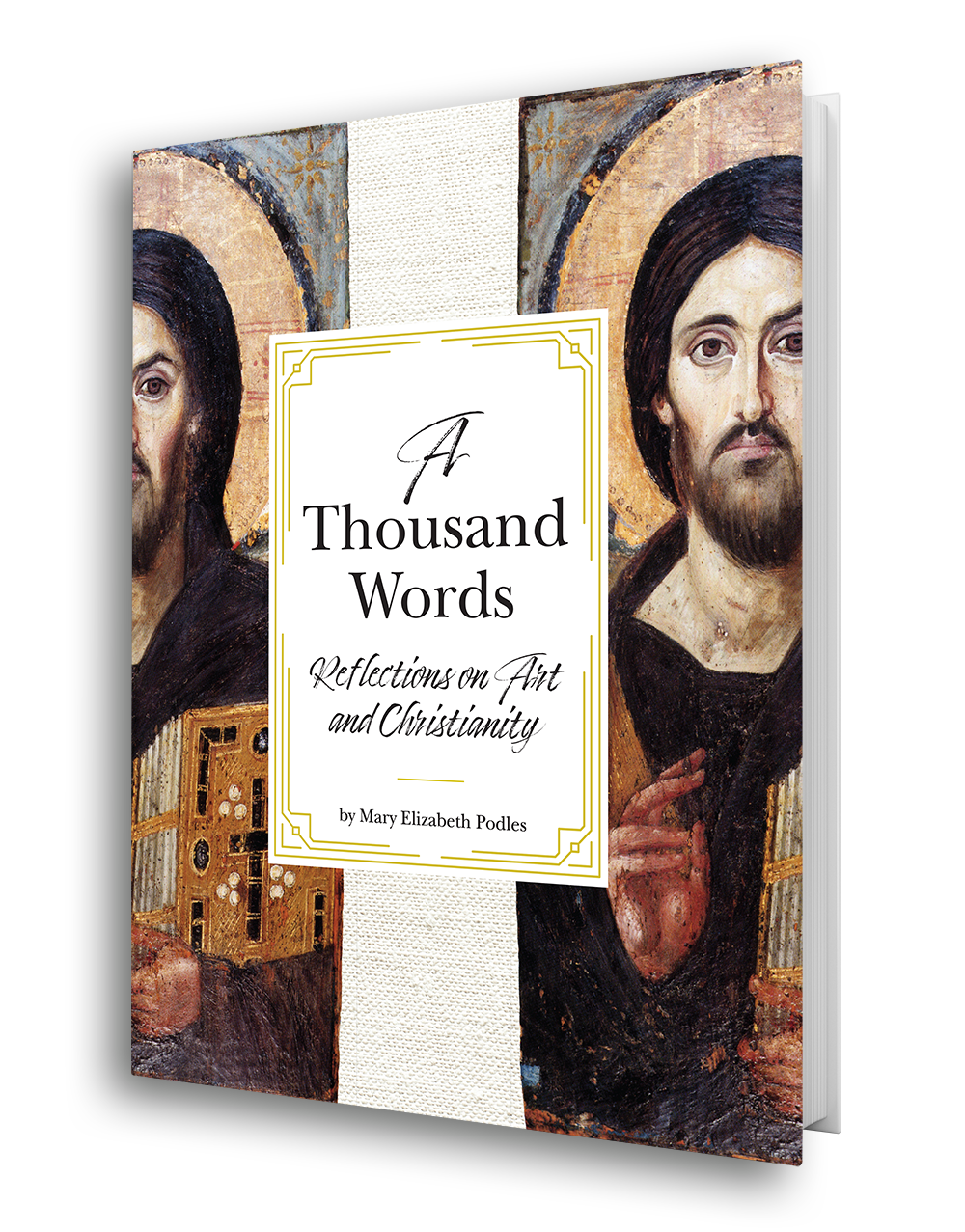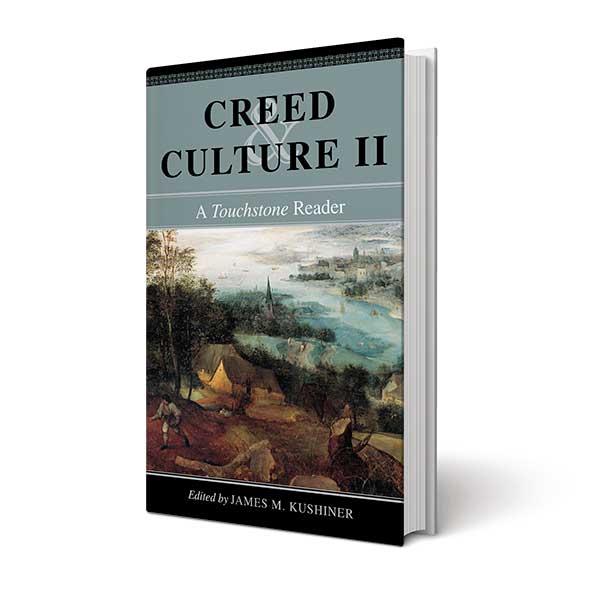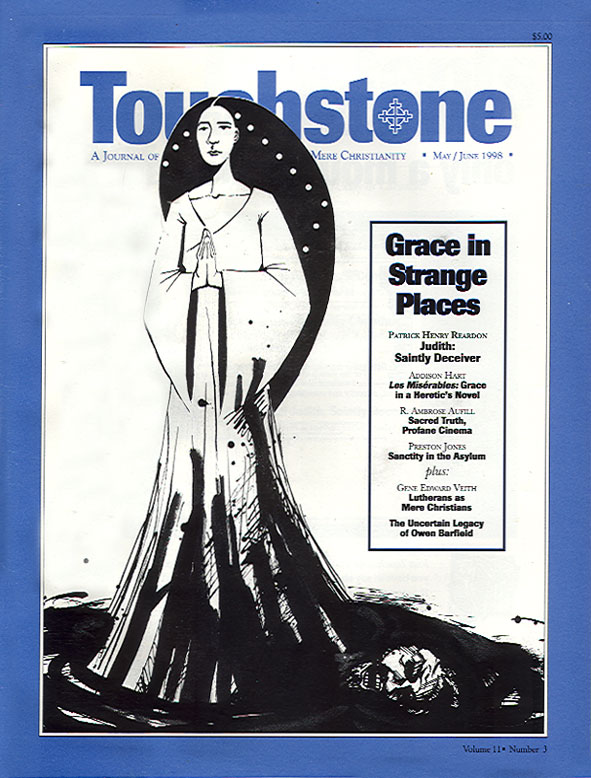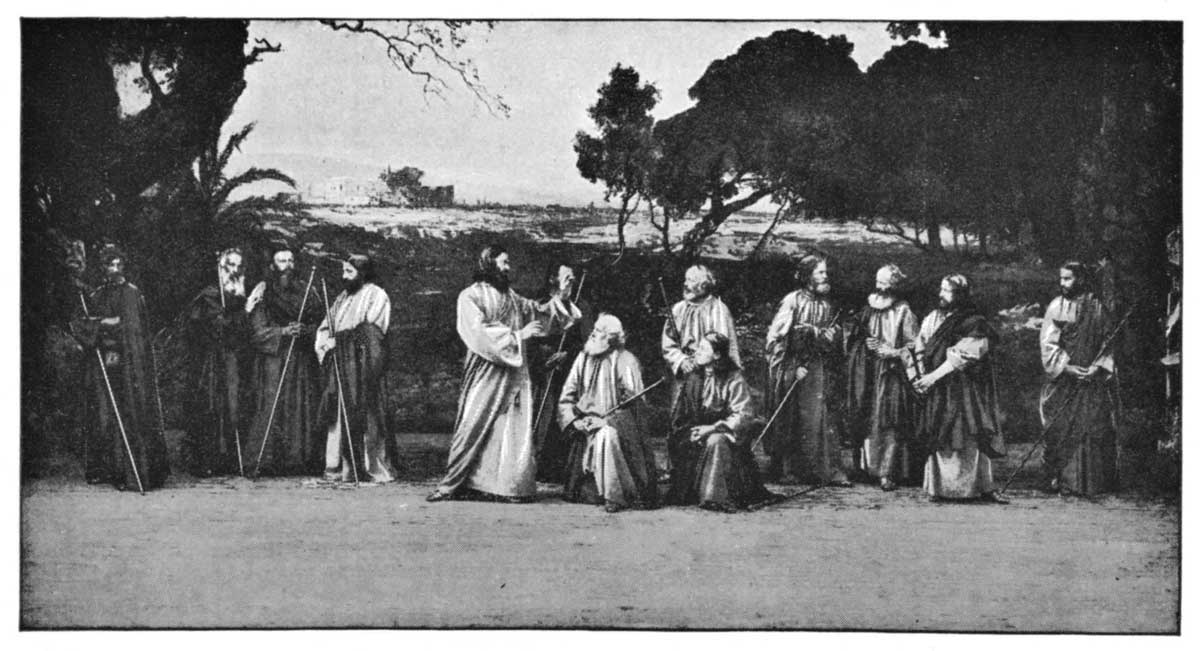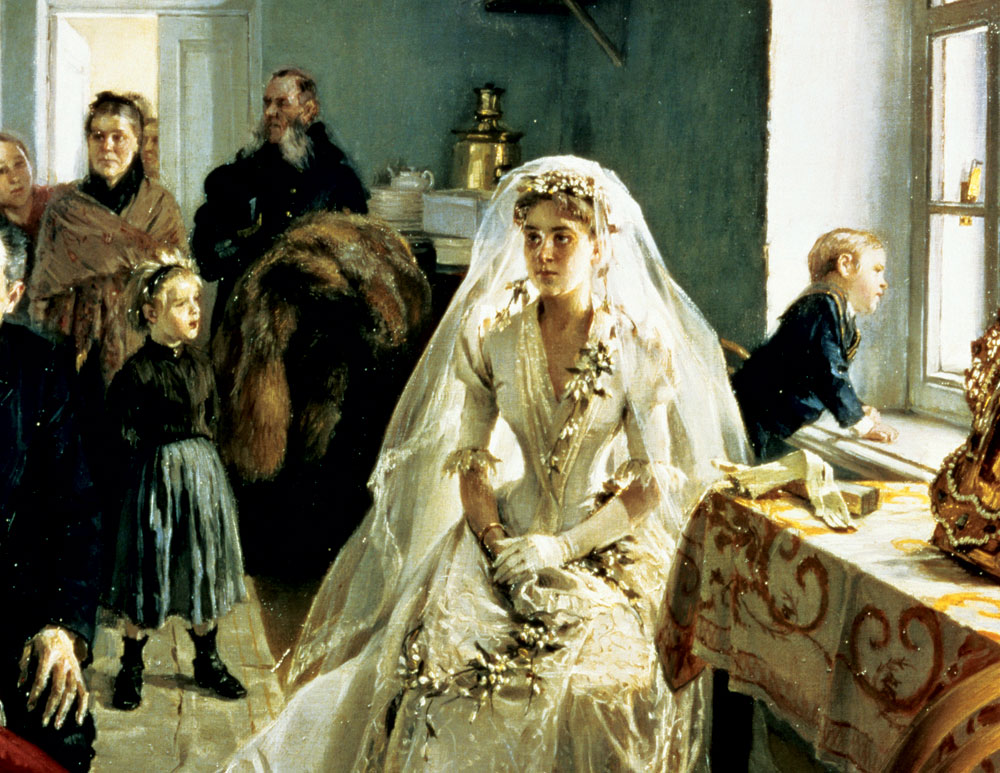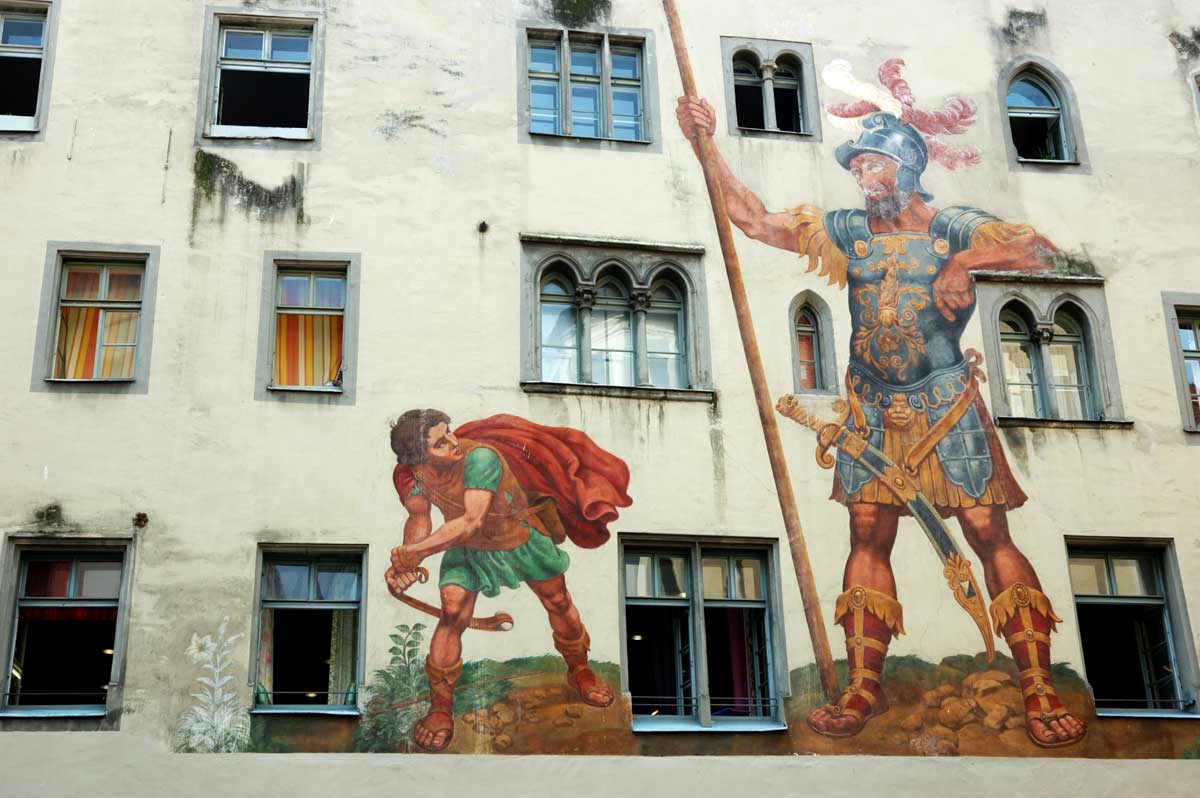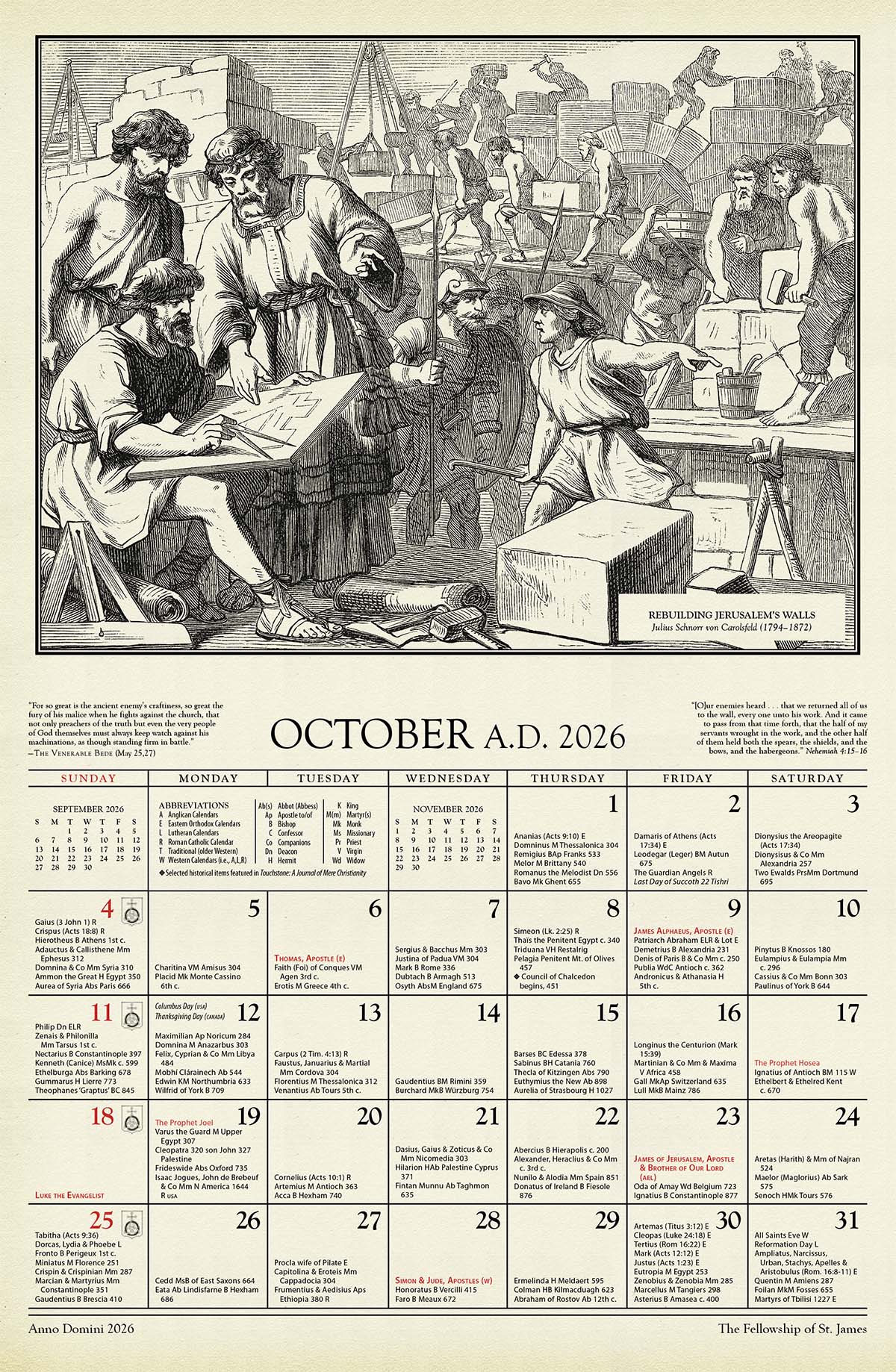Sex Cathedra: Theology from the White House
Amid the many controversies swirling around the Clinton administration, that which erupted over the President’s having attended Mass and having received Communion in a Catholic church in South Africa was soon shrugged off as a series of misunderstandings. But in fact it provided a highly illuminating glimpse into the tangled relationship between religion and politics in the United States.
On March 29 the President attended Mass in a church in the Soweto district, where he came forward and was given Communion by the celebrant, Father Mohlomi Makobane. (Ironically, photographs showed the President receiving Communion directly on the tongue, which in the United States is considered by liturgical bureaucrats a sign of being hopelessly backward.)
Negative reaction in the United States was swift, as several bishops said publicly that the Communion was improper. Most outspoken was Cardinal John J. O’Connor of New York, who criticized the action from the pulpit of St. Patrick’s Cathedral, reminding listeners that not only are non-Catholics ordinarily not allowed to receive Catholic Communion, Catholics too are not to approach the holy table if they are conscious of being out of the state of grace because of grave sin.
The Code of Canon Law, which governs the practice of the entire Catholic Church, forbids reception of Communion by non-Catholics except in cases of “grave necessity,” when the recipients do not have access to the sacraments of their own church and when they share the Catholic understanding of the Eucharist, neither of which conditions applied in Clinton’s case.
The Catholic doctrine of the Real Presence—that in the Mass the bread and wine are transformed into the body and blood of Christ—is shared by very few Protestants. In addition, the Catholic Church understands the Eucharist as at the heart of the Mystical Body of Christ, which is the very life of the Church, and one receives the Eucharist only when in union with the Church.
In characteristic fashion, once Clinton had been criticized for receiving Communion, the White House went on the counterattack, Press Secretary Mike McCurry telling reporters that Cardinal O’Connor simply did not understand the position of the South African bishops’ conference on the matter. The printed program for the Mass that Clinton attended specifically stated that non-Catholics were free to receive Communion, McCurry pointed out.
At first it appeared that he was right. Father Makobane told the media he did not regret giving the President Communion and had acted properly. However, he also revealed that he had simply provided the American embassy in South Africa with a copy of the bishops’ rules. It was the embassy that printed the program inviting non-Catholics to receive Communion.
The official White House explanation unraveled further when a spokesman for the diocese of Johannesburg said that Father Makobane was obliged to seek permission from the bishop before giving Clinton Communion and that he had failed to do so. The official spokesman also explained that the reference in the guidelines to “a special feast or event” when non-Catholics might receive Communion referred to close family members on occasions like weddings and funerals.
Father Makobane defended his actions in part by insisting that he could not embarrass the President by refusing him Communion when he presented himself. But, as the diocesan spokesman pointed out, it had been planned in advance that the President should do so and thus came as no surprise to the celebrant when it happened.
Before long official Vatican spokesmen also stated bluntly that Clinton’s reception of Communion was improper and contrary to canon law. However, when asked if the President regretted having done so, McCurry said he had no regrets whatever.
Reading between the lines, there is a possibility that the event was stage-managed by the presidential party with the knowing cooperation of Father Makobane.
The most puzzling aspect of the whole affair was why Clinton was attending a Catholic Mass in the first place. Father Makobane at one point tried to defuse the controversy by saying that the visit was in no way political but was purely spiritual. However, Clinton is a Baptist and, when he seeks spiritual nourishment, is not in the habit of attending Catholic services. Father Makobane also said that he thought the presidential visit was intended to honor his parish for its role in the struggle against apartheid. Thus the priest recognized that there was obvious political significance to the visit.
Another irony of the occasion was the fact that the Gospel of the day happened to be the story of the woman taken in adultery. Father Makobane said he was disturbed when he realized this. “But what could I do? I had to follow the reading of the day,” he asked, hinting that, had he dared, he might have altered the liturgy to spare Clinton’s sensibilities. He dismissed the President’s own history of adultery as “American business, not our business,” as though the possibility of the sinful reception of Communion were itself merely a political issue, confined within national boundaries.
But Clinton undoubtedly saw the obvious political advantage from such an occasion. While a majority of American Catholics voted for him in l996, he is strongly opposed by many others because of his fanatical support for abortion. Receiving Communion in a Catholic church was like wrapping himself in the flag, and he probably counted on the picture of that event counteracting a good deal of the uneasiness that Catholics feel towards him.
But in the end what happened at Mass on March 29 may have been less significant than the White House response as articulated by McCurry, a significance that might be illumined by contrasting the behavior of two prominent Catholic politicians—Senator Edward Kennedy of Massachusetts and Mario Cuomo, former governor of New York.
Kennedy’s personal life is rather notorious, and he has never been perceived, nor has he ever tried to present himself, as a devout Catholic. On the contrary, his entire political career, following the lead of his older brother the late President, has been based on the claim that public officials should completely separate their faith from their political actions.
Cuomo, on the other hand, has always been seen as a devout and well-instructed Catholic. When he was criticized, by Cardinal O’Connor and others, for his consistently pro-abortion stand as governor, he tried in effect to appeal to Catholics over the heads of their bishops. The latter, he claimed, had an inadequate grasp of modern Catholic theology, and he invited Catholics to ignore the hierarchy and look to Cuomo himself for religious guidance, citing the work of the late Jesuit theologian Pierre Teilhard de Chardin, who is the subject of an official Vatican warning as to his orthodoxy.
Cuomo also kept a large portrait of St. Thomas More in his office and pointed to More as his inspiration. But, as everyone knows, More suffered martyrdom precisely because he rejected the claims to spiritual authority of a secular ruler, and many people have pointed out that it would have been far more appropriate for Cuomo to have hung a portrait of Henry VIII in his office.
While Clinton used his African trip to issue an orgy of apologies for American sins, especially slavery, he is notable for his refusal to acknowledge failings in his own conduct, even when the evidence is overwhelming. McCurry’s “handling” of the Communion controversy thus became a textbook example of how the Clinton White House deals with the many allegations against the President.
With breathtaking boldness, McCurry borrowed a tactic from Mario Cuomo and told the nation that Cardinal O’Connor, the country’s best-known Catholic prelate, simply misunderstands the policies of his own Church and that, if Americans seek authoritative guidance as to those policies, the White House will be glad to provide it. In effect those bishops who criticized the President were accused of being theologically deficient (believing that the Code of Canon Law governs the Church), a deficiency which, once again, the White House is prepared to remedy.
Cokie Roberts, a television commentator, also offered herself as a more reliable guide to Catholic theology than Cardinal O’Connor. The Cardinal, she regretted, ignored the Catholic teaching that receiving the Eucharist is a source of grace. Her statement was breathtaking in its arrogant assumption that a television personality can authentically interpret Catholic belief, considering one aspect of that belief, confusedly understood, in isolation from all other aspects of that belief.
But Roberts’s theological gaucherie may have been more calculated than ignorant—she is the daughter of Lindy Boggs, former Democratic congresswoman from Louisiana, now Clinton’s ambassador to the Vatican.
Meanwhile, the journalist James Reno, brother of Attorney General Janet Reno, accused Cardinal O’Connor of stirring up a religious war, a truly astounding remark in its implication that for a church to defend the integrity of its teachings and practices is somehow an act of hostility.
But Reno’s audacious charge revealed the barely hidden agenda of the White House. The President found it politically useful to receive Communion in a Catholic service, and anyone who objected was guilty of an act of hostility.
If the claims of McCurry, Roberts, and Reno were taken seriously, it would follow that the Clinton White House is a more reliable guide to the Catholic understanding of the Eucharist than any bishop appointed by the pope. Such an audacious claim is also in harmony with the deliberate moral ambiguity that appears to support the President in the midst of the growing scandals.
The White House’s effort to redefine the meaning of the Eucharist is of a piece with the kind of “damage control” it has consistently employed in dealing with the growing accusations concerning the President’s sex life. Here the President has taken it upon himself to redefine adultery, implying that it does not encompass oral sex, but also to decree that adultery is not to be considered a serious moral failing. With the moral leadership of the churches in disarray, a popular president thrusts himself forward as the country’s most reliable guide to right and wrong, in effect telling millions of religious believers that they should abandon the doctrines on which they were raised and embrace his own newly defined sexual ethic, the essence of which is that merely “personal” actions are of no moral significance.
On the one hand the claim to spiritual authority is a cynical one, merely another tactic in the endless campaign to “manage the news.” But on the other hand it may also be in a way sincere. As numerous analysts have pointed out, President Clinton and his wife represent the generation of the sixties that came to prominence through their systematic assaults on all accepted American beliefs, all respected institutions, managing in the process to elevate themselves to the status of moral paragons incapable of serious failing. Thus, when the President approached the altar in an obscure South African church, he may well have thought he was doing Catholics all over the world an enormous favor, striking yet another blow against an outmoded system of belief from which they ought to be liberating themselves.
—James Hitchcock
James Hitchcock is Professor emeritus of History at St. Louis University in St. Louis. He and his late wife Helen have four daughters. His most recent book is the two-volume work, The Supreme Court and Religion in American Life (Princeton University Press, 2004). He is a senior editor of Touchstone.
subscription options
Order
Print/Online Subscription
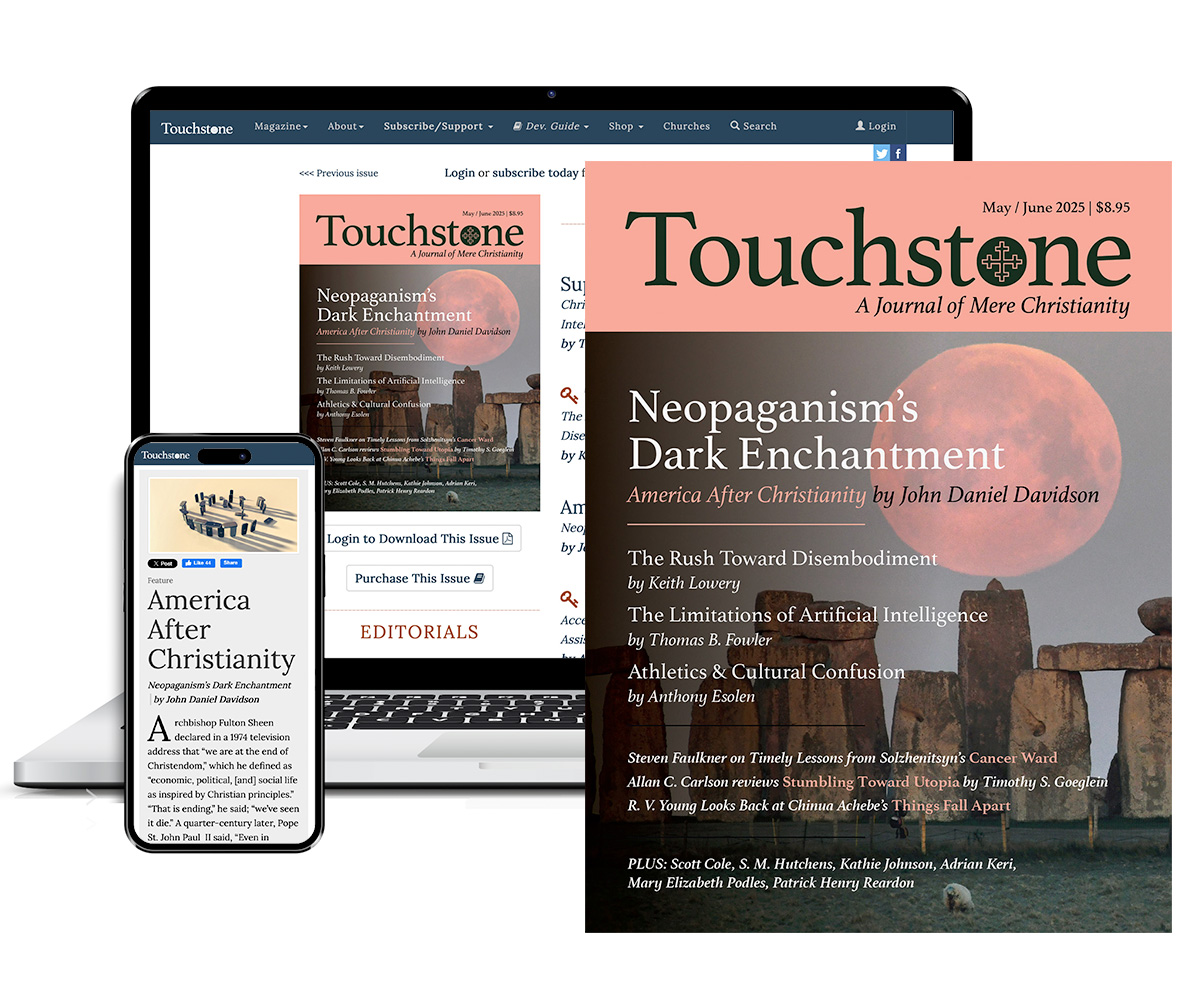
Get six issues (one year) of Touchstone PLUS full online access including pdf downloads for only $39.95. That's only $3.34 per month!
Order
Online Only
Subscription
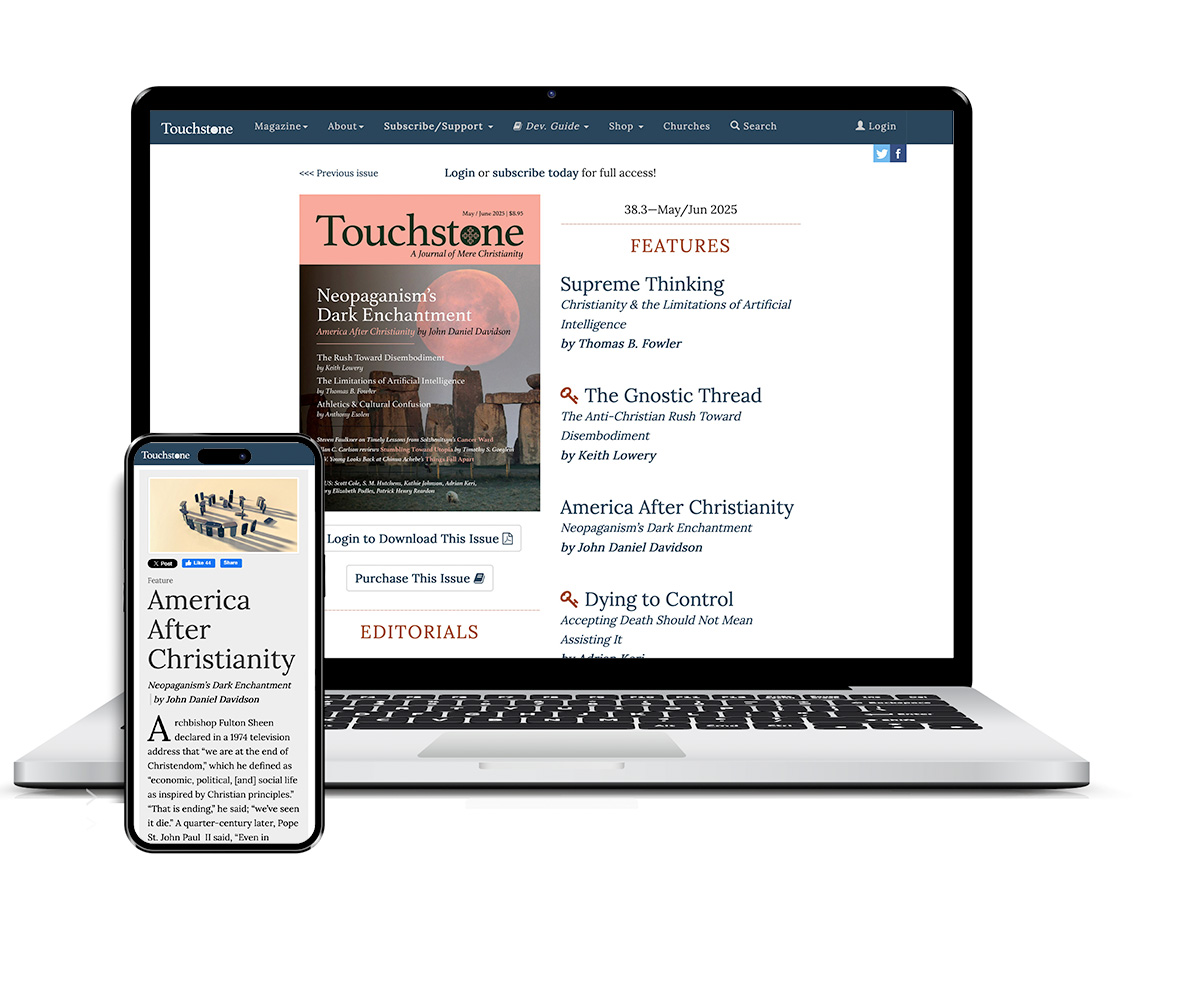
Get a one-year full-access subscription to the Touchstone online archives for only $19.95. That's only $1.66 per month!
bulk subscriptions
Order Touchstone subscriptions in bulk and save $10 per sub! Each subscription includes 6 issues of Touchstone plus full online access to touchstonemag.com—including archives, videos, and pdf downloads of recent issues for only $29.95 each! Great for churches or study groups.
Transactions will be processed on a secure server.
more on sex from the online archives
more from the online archives
calling all readers
Please Donate
"There are magazines worth reading but few worth saving . . . Touchstone is just such a magazine."
—Alice von Hildebrand
"Here we do not concede one square millimeter of territory to falsehood, folly, contemporary sentimentality, or fashion. We speak the truth, and let God be our judge. . . . Touchstone is the one committedly Christian conservative journal."
—Anthony Esolen, Touchstone senior editor



